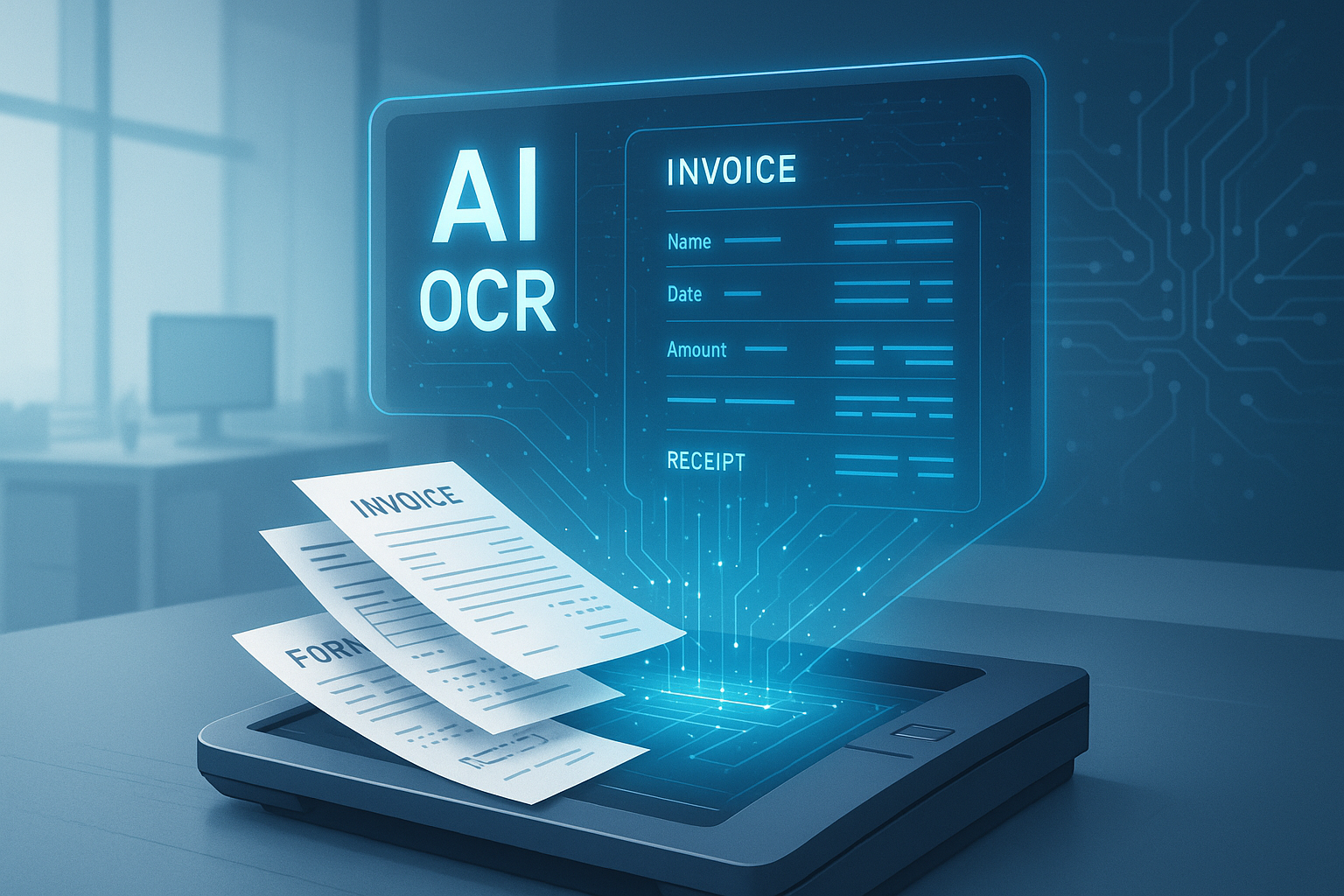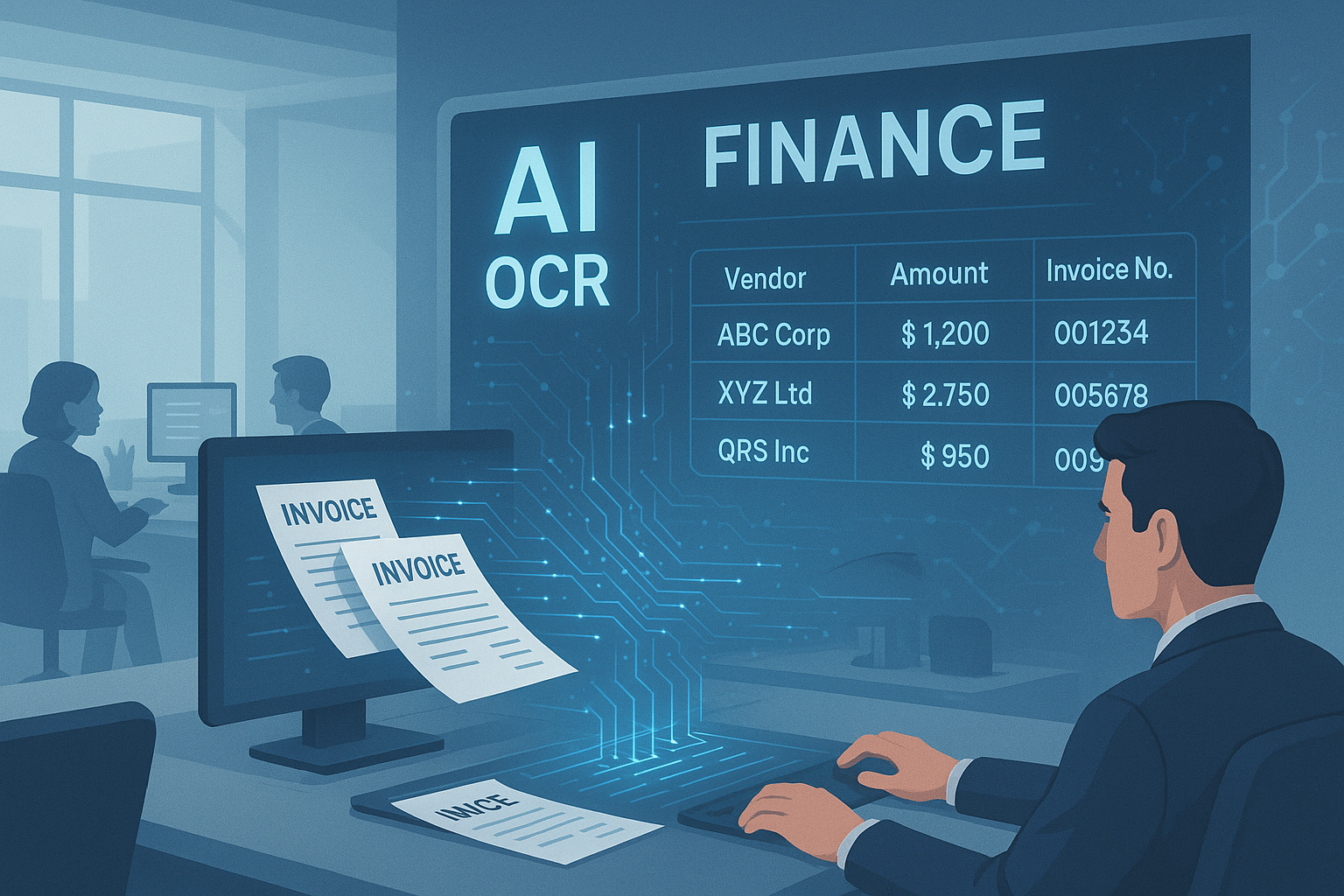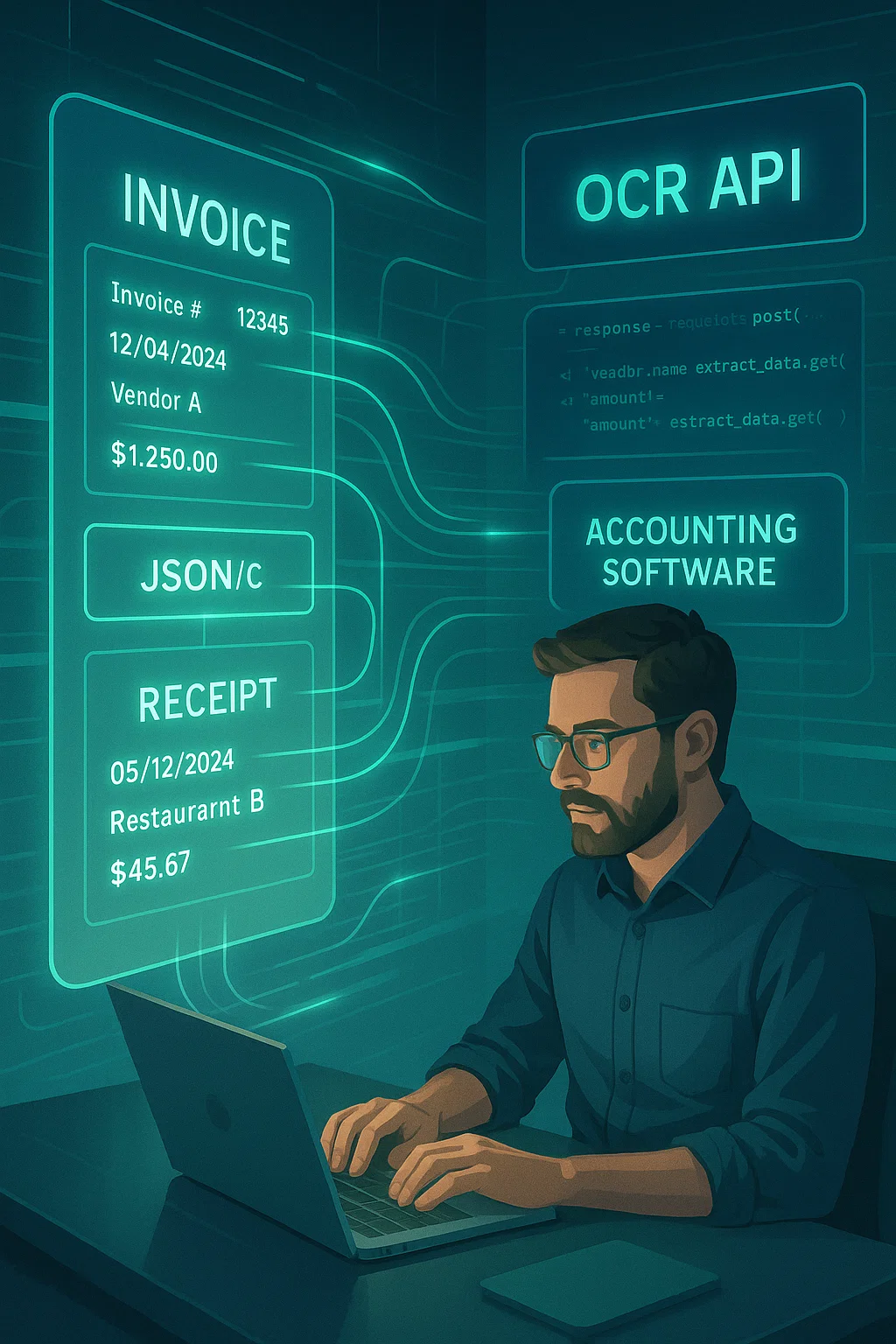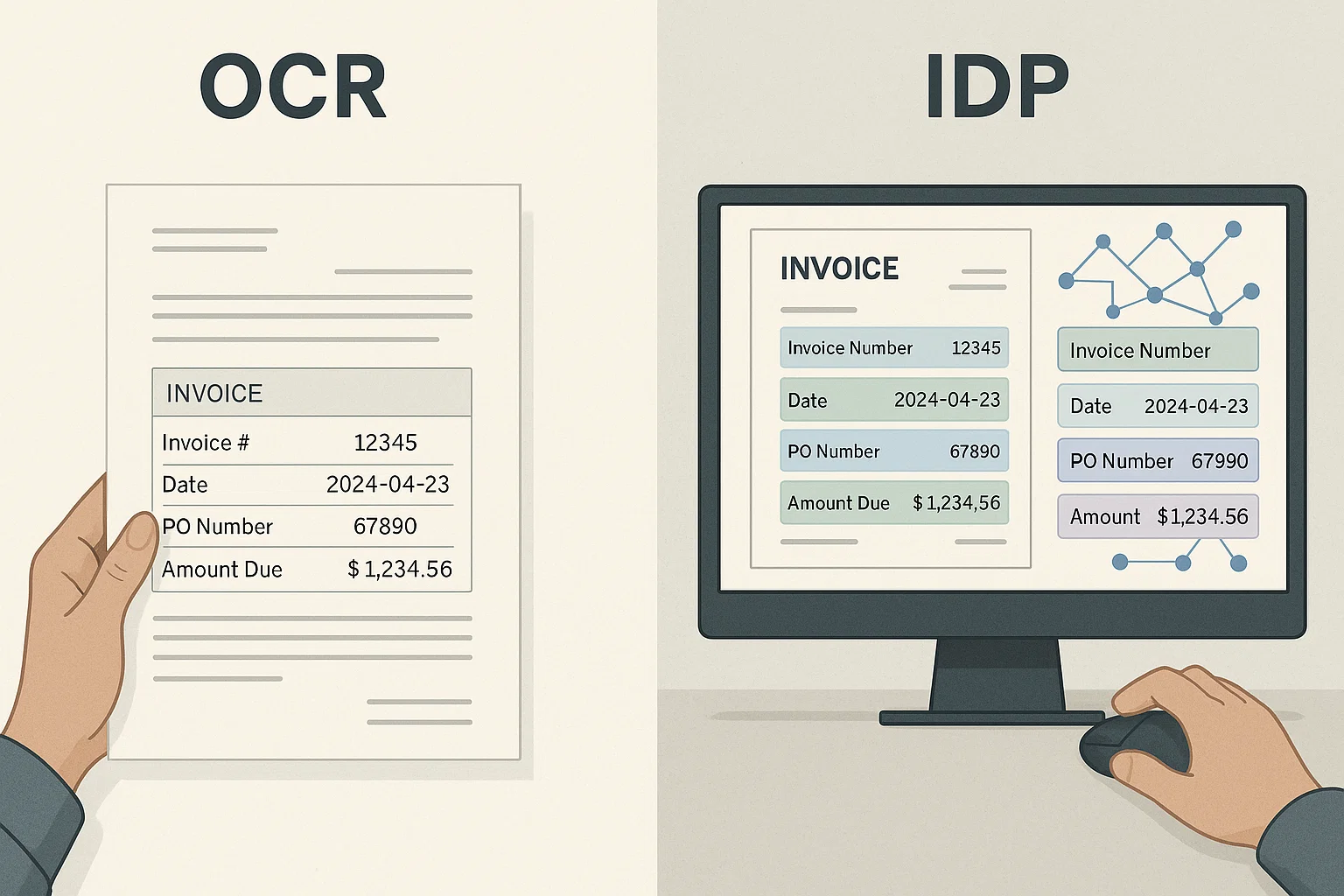Revolutionizing Document Management with OCR Technology
Explore how AI-powered OCR technology transforms document management by digitizing text, streamlining workflows, reducing errors, and boosting efficiency across industries.

Table of contents
When I first started working with document processing systems a decade ago, my team spent countless hours manually inputting data from stacks of invoices and forms. We'd joke about developing carpal tunnel syndrome by 40. Fast forward to today, and I'm still amazed at how OCR technology has completely changed the game.
The Document Dilemma We All Face
Let's face it—paperwork is the necessary evil of business life. Whether you're drowning in invoices, wrestling with purchase orders, or trying to make sense of handwritten forms, managing documents can eat up hours of your day. I remember one client who discovered they were spending nearly $30 per invoice just on manual processing costs!
This is exactly where OCR (Optical Character Recognition) steps in as a lifesaver, not just a tool.
OCR Explained (Without the Tech Jargon)
Think of OCR as your tireless digital assistant with extremely good eyes. It looks at images or scanned documents and picks out the text—just like you would—but at lightning speed and without needing coffee breaks.
Here's what happens behind the scenes:
- You scan a document or snap a photo of it
- The OCR system cleans up the image (fixing things like weird angles or shadows)
- It examines the document to find the text
- It converts those visual patterns into actual digital text
- Voilà! You now have searchable, editable content instead of a static image
I remember trying early OCR systems in the 2000s—they were frustratingly limited. If a document wasn't perfectly aligned or had an unusual font, you'd end up with digital gibberish. Not exactly helpful!
The AI Revolution That Changed Everything
The OCR systems of yesterday were like stubborn toddlers—they needed everything just so, threw tantrums with unusual documents, and required constant supervision.
Traditional OCR software struggled with:
- Documents that weren't perfectly straight (which, let's be honest, is most of them)
- Anything handwritten (forget about doctors' notes!)
- Understanding the difference between a table and a paragraph
- Different document layouts without extensive programming
But then AI entered the scene and completely rewrote the rules.
Modern AI-powered OCR feels almost magical by comparison. I watched a client's jaw literally drop when our new system correctly processed a coffee-stained, crumpled receipt that had been sitting in someone's wallet for weeks. The previous system would have just given up!
Today's smart OCR can:
- Figure out what it's looking at without being explicitly told
- Get better over time as it processes more documents
- Handle messy handwriting (even mine, which my own mother struggles to read)
- Understand document context—knowing an invoice number is different from a date
- Extract specific information you need without grabbing everything
Real-World OCR Heroes: Where It's Making a Difference
I've seen OCR transform operations across industries, but a few applications really stand out:
Finance Departments Finding Freedom
A mid-sized manufacturing company I consulted for cut their accounts payable processing time by 78% after implementing OCR. Their AP clerk, who used to spend Fridays in a panic trying to process everything before month-end, now actually takes lunch breaks!
OCR helps with:
- Pulling vendor details, amounts, and due dates from invoices
- Digitizing those annoying little expense receipts everyone hates to manage
- Converting financial statements from PDFs into data you can actually analyze
Customer Experience Leaps
Remember the last time you had to fill out the same information on multiple forms? Maddening, right? Smart companies are using OCR to eliminate this frustration.
A regional bank I worked with reduced their mortgage application processing time from 15 days to just 3 by using OCR to extract data from supporting documents. The customer satisfaction scores jumped dramatically, and they gained market share as a result.
Document Management That Actually Works
We've all been there—trying to find that one critical document in a sea of files. "I know I saved it somewhere..." becomes your mantra as you waste precious time searching.
One legal firm I advised had over 30 years of case files that were essentially locked away in filing cabinets. After implementing OCR as part of their digitization project, their attorneys could find precedents and references in seconds rather than hours. It was like watching people discover fire for the first time!
Finding Your Perfect OCR Match
With so many options out there, how do you choose the right OCR solution? Having helped dozens of companies through this process, here's my real-world advice:
Accuracy vs. Speed: The Eternal Tradeoff
If you're processing medical records or legal documents, you'll need the highest possible accuracy.
Related Blog Posts

Smarter Invoice Processing: The OCR Advantage for Finance Departments
Learn how OCR technology revolutionizes invoice processing for finance departments by automating data extraction from invoices, reducing costs, and boosting accuracy. This guide covers OCR's benefits, AI enhancements, and practical steps to transform accounts payable operations

OCR APIs: The Secret Weapon Smart Finance Teams Are Using Right Now
Discover how OCR APIs transform finance teams by automating data entry from receipts and invoices, cutting processing time by up to 85%, and boosting accuracy to 98%. This guide shares real-world insights for modernizing financial workflows.

IDP vs OCR: Understanding the Key Differences for Automation Success
Discover the crucial differences between IDP vs OCR technologies and learn how each can transform your document processing workflows for maximum efficiency.
Ready to Transform Your Lending Process?
See how DocsAPI's AI-powered industry classification can help you process loans faster, improve accuracy, and scale your operations.
